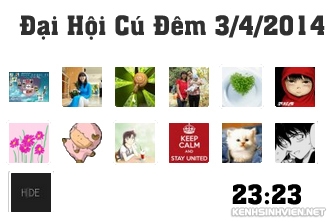OUTLINE
_____________________________________
II. Rites in Thay Pagoda Festival
(In Thay Pagoda Festival, there are 2 main kinds of activities: rites and games.)
1. The statue bathing ritual
- Time : before the opening of the festival
- Participants: Buddhist monks and the people
- Pure water is brought to the alter.
- Pieces of red cloth are used to clean the statues by the Buddhist monks.
- Ppl stand around solemnly, hold hands in front of chests, whisper Buddhist sutras (a type of literary composition in Buddhism and Hinduism)
- When the ritual ends: the used water (the holy water that Buddha bestows) will be scattered all over the pagoda. Ppl wish for good harvests and prosper life.
- The cloths are torn into smaller pieces, devided among ppl, coz they are thought to help children have the power against the evils.
- The rite of cleaning objects of worship comes after the statue bathing ritual)
2. The procession of Tu Dao Hanh’s worshipping tablet.
- Time: 7th day of third lunar month.
- Participants: 4 villages: Thụy Khê, Đa Phúc, Sài Khê, Khánh Tân
- The local population believe that Tu Dao Hanh first learned supernatural power and became a genius, and at later time, embraced Buddhism.
- The tablet: is covered/wrapped under a yellow cloth (the color of ppl that have supernatural powers or the Kings). On the return trip, the same tablets should be wrapped in the brown frock of a Buddhist monk.
- The order of the procession: has variations with specific significance: At the start: the tablet of the Spirit Protector and the Red Horse of Thụy Khê Village come first -> the tablet of the Spirit Protector and the White Horse of Đa Phúc Village -> the tablet of the respective Spirit Protectors of Sài Khê and Khánh Tân Villages -> and at the end comes the tablet of Từ Đạo Hạnh.
- Each village carries its own Spirit Protector’s tablet.
- 4 representatives from 4 villages carry the tablet of Từ Đạo Hạnh.
- During the return trip: there is a change in the order of the procession: the tablet of the Spirit Protector and White Horse of Đa Phúc Village must come first, to be followed by the tablet of the Spirit Protector and the Red Horse of Thụy Khê Village. However, the order of the remaining components of the procession remains unchanged.
- The above change in the precedence of the Red and White horses is connected with a specific legend: When Từ Đạo Hạnh promised to be born again after death as the son of Marquis Sùng Hiền Hầu (younger brother of King Lý Nhân Tông) he told the Marquis: “When your wife is giving birth, you must notify me immediately so that I can perform the due rites.” As agreed, on that day, Sùng Hiền Hầu ordered some horsemen to rush to the Pagoda for this purpose. The Red Horse reached the pagoda first and brought in the news, while on the return trip, the White Horse ran faster than the Red Horse and came home first.
- In the core of the procession: Buddhist nuns walk while recounting the achievement of Từ Đạo Hạnh in learning supernatural magic and then in leading a religious Buddhist life.
- Normally, the procession comes to the pagoda at twilight. This moment is considered as the time when night takes over from day, when darkness and night come into contact with each other.
3. Presenting offerings to Buddha
- At the pagoda: it’s held in a solemn manner accompanied by musical instruments.
- The offerings in various kinds and different colours are out into the altar and impressive in the smoke of incenses and candles.
- Buddhist monks wear fine outfits, hold sticks decorated with flowera, recite Buddhist sutras while dancing to display the journey of mankind in striving for noble things.

 Hôm nay được nghỉ học buổi chiều, sáng học Tin, làm xong hết bài là thầy cho về. Thế là hết tiết 1 và giờ ra chơi là em được về rồi. Hehe!!
Hôm nay được nghỉ học buổi chiều, sáng học Tin, làm xong hết bài là thầy cho về. Thế là hết tiết 1 và giờ ra chơi là em được về rồi. Hehe!!







